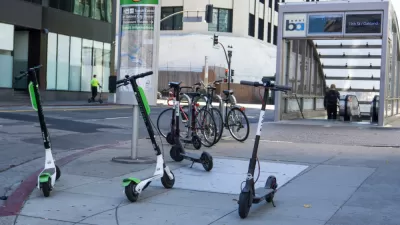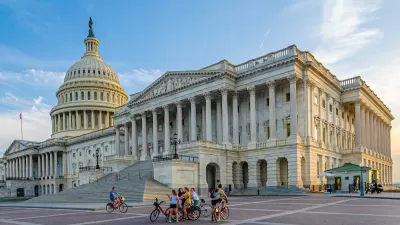Shared mobility services are proliferating in small towns and cities, despite the regulatory hiccups operators have been experiencing in larger markets.

“In recent months, shared micromobility companies like Bird, Lime and Lyft have rapidly expanded their products in small and midsized markets with populations ranging from 2,500 to over 150,000,” reports Austyn Gaffney in Smart Cities Dive. Despite the backlash to micromobility from some community groups concerned about safety and parking, industry stalwart Bird “grew from about 250 global markets last year to more than 400 this spring.”
“Cities have been amenable to micromobility options like e-bikes and e-scooters over the last five years as ways to increase residents’ and visitors’ transportation options, ease congestion, and reduce transportation emissions, which represent over a quarter of the greenhouse gas emissions in the U.S.” Meanwhile, operators continue to implement speed limiters, geofencing, and other features to address cities’ concerns. “Chris Cherry, professor of civil and environmental engineering at the University of Tennessee, Knoxville, whose research focuses on micromobility options emerging in the transportation sector, said that when he hears concerns over sidewalk clutter, he asks those issuing the complaint to consider the amount of parked cars across urban environments, and to note the historic buildings demolished to make way for parking lots.”
Pointing to fears about the safety of scooters, Cherry points out that the devices are held to much higher standards than cars, which pose a much greater danger to their passengers and pedestrians. Cherry notes that “while 80% of scooter users killed during rides were hit by cars, there is ‘vanishingly small evidence’ that pedestrian injuries are caused by scooters.”
FULL STORY: Micromobility operators expand their footprint in small and midsized cities

Alabama: Trump Terminates Settlements for Black Communities Harmed By Raw Sewage
Trump deemed the landmark civil rights agreement “illegal DEI and environmental justice policy.”

Planetizen Federal Action Tracker
A weekly monitor of how Trump’s orders and actions are impacting planners and planning in America.

The 120 Year Old Tiny Home Villages That Sheltered San Francisco’s Earthquake Refugees
More than a century ago, San Francisco mobilized to house thousands of residents displaced by the 1906 earthquake. Could their strategy offer a model for the present?

In Both Crashes and Crime, Public Transportation is Far Safer than Driving
Contrary to popular assumptions, public transportation has far lower crash and crime rates than automobile travel. For safer communities, improve and encourage transit travel.

Report: Zoning Reforms Should Complement Nashville’s Ambitious Transit Plan
Without reform, restrictive zoning codes will limit the impact of the city’s planned transit expansion and could exclude some of the residents who depend on transit the most.

Judge Orders Release of Frozen IRA, IIJA Funding
The decision is a victory for environmental groups who charged that freezing funds for critical infrastructure and disaster response programs caused “real and irreparable harm” to communities.
Urban Design for Planners 1: Software Tools
This six-course series explores essential urban design concepts using open source software and equips planners with the tools they need to participate fully in the urban design process.
Planning for Universal Design
Learn the tools for implementing Universal Design in planning regulations.
Clanton & Associates, Inc.
Jessamine County Fiscal Court
Institute for Housing and Urban Development Studies (IHS)
City of Grandview
Harvard GSD Executive Education
Toledo-Lucas County Plan Commissions
Salt Lake City
NYU Wagner Graduate School of Public Service





























